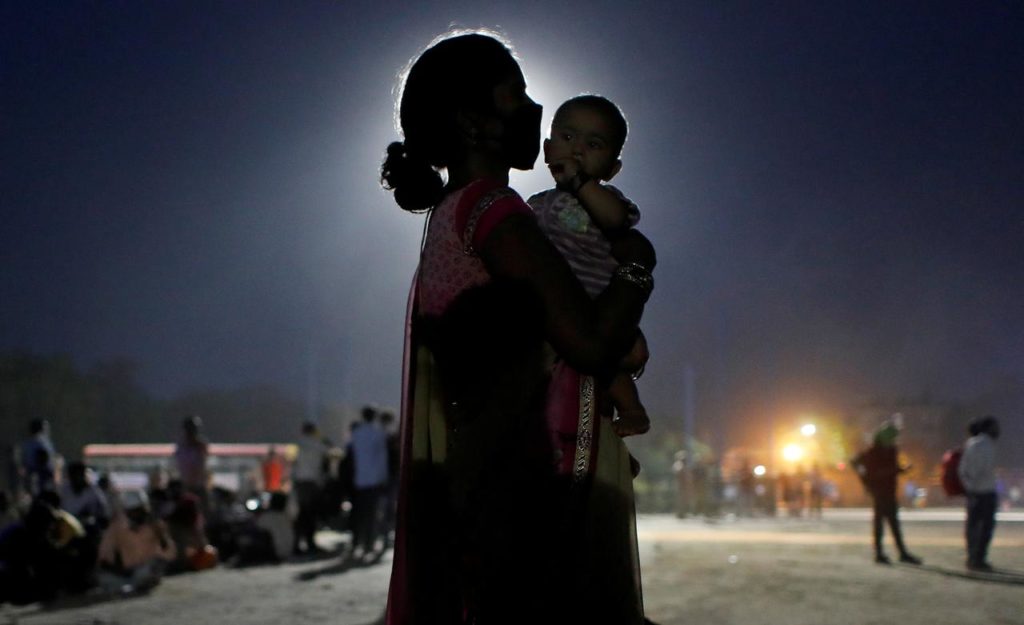Maternal Mortality Above UN Target In 70% Of Districts: Study
Jul 22, 2022 | Pratirodh Bureau
After centuries of being sidelined by medical science, women’s health may finally be starting to get the attention it deserves. The mass media has begun to cover the gender pain gap and scientists in many countries are now required to include women in their research studies. Unfortunately, some unscrupulous companies are cashing in on the women’s health advocacy movement (Representational Image)
Maternal mortality ratio (MMR) in 448 of India’s 640 districts is higher than the target set under UN Sustainable Development Goals (SDG), according to the first mapping of India’s maternal deaths at the district level.
Arunachal Pradesh fares the worst of all states and Maharashtra the best, says the study published in the journal PLOS Global Public Health on Tuesday. Scientists analysed 61,982,623 (61.9 million) live births and 61,169 maternal deaths recorded in the Health Management Information System (HMIS) during 2017-2019.
As Census 2011 data was used, only 640 districts were considered against 773 in 2022. The findings suggest that 70 per cent of districts (448 out of 640 districts) in India have reported MMR above 70 deaths — a target set under Sustainable Development Goal, the researchers said.
MMR refers to deaths due to complications from childbirth or pregnancy per 1 lakh live births. The MMR under the UN’s SDG for 2030 is 70. India’s MMR is 113 right now. It accounts for 15 per cent of world maternal deaths, second only to Nigeria (19 per cent), the study said.
The highest MMR is in Arunachal Pradesh (284) and the lowest in Maharashtra (40), researchers from the International Institute for Population Sciences in Mumbai, the University of Portsmouth, UK, and the University of Western Australia found. Four other states — Manipur (282), Andaman and Nicobar Island (275), Meghalaya (266), and Sikkim (228) — have MMR greater than or equal to 210.
Nine states and two union territories have MMR in the range of 140-209. These are Nagaland (143), Punjab (143), Chhattisgarh (144), Jammu and Kashmir (151), Delhi (162), Rajasthan (162), Bihar (164), Madhya Pradesh (179), Lakshadweep (208), Uttar Pradesh (208), and Assam (209).
“Recent estimates of Sample Registration System (SRS) of India have witnessed a steady decline in the MMR from 130 to 113 per 100,000 live births… ,” the authors said in the journal. “We examined socio-demographic and health care correlates of MMR using large-sample and robust statistical tools,” they added.
MMR is a key and sensitive parameter used by health policymakers to monitor maternal health conditions in particular and women’s status in general in a country.
Although MMR is falling at an average of 4.5 per cent yearly, the target set under SDG-3 is an annual rate of 5.5 per cent, the researchers said. A comparison of successive rounds of information from the Office of Registrar General of India reveals a surprising rise in MMR in Punjab.
“We are guessing that it could be due to unsafe sex-selective abortions leading to the death of women in the state. However, a detailed examination of reasons for such a rise is needed from the state government’s side,” the researchers said.
Among the districts, the highest MMR is found in the Tirap district of Arunachal Pradesh and the lowest in Kinnaur and Lahaul-Spiti of Himachal Pradesh, the researchers said.
Overall, 115 districts registered a maternal mortality ratio greater than or equal to 210; 125 districts show a range of 140-209 while 210 districts fall in the range of 70-139, and only 190 districts reported a maternal mortality ratio less than 70, they said.
The findings can be immensely useful in identifying ‘hot spots’ of maternal mortality within the states, thus aiding in micro-level maternal health care policy and planning.
These hotspots or cluster of districts need to initiate immediate action to meet the ambitious SDG-3 target for maternal mortality ratio and thereby eliminate all preventable maternal mortality, the researchers said.
The researchers also noted that despite some caveats about the completeness of information in a few states, HMIS is a reliable, cost-effective, and routine source for monitoring progress in reducing avoidable maternal mortality in India and its states and districts.
